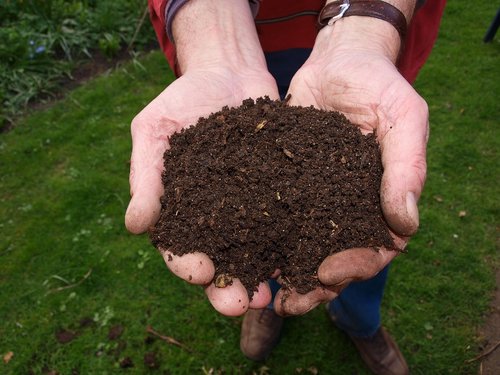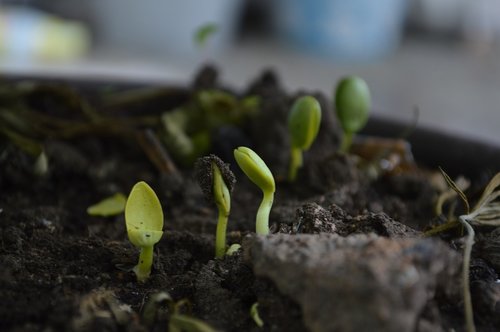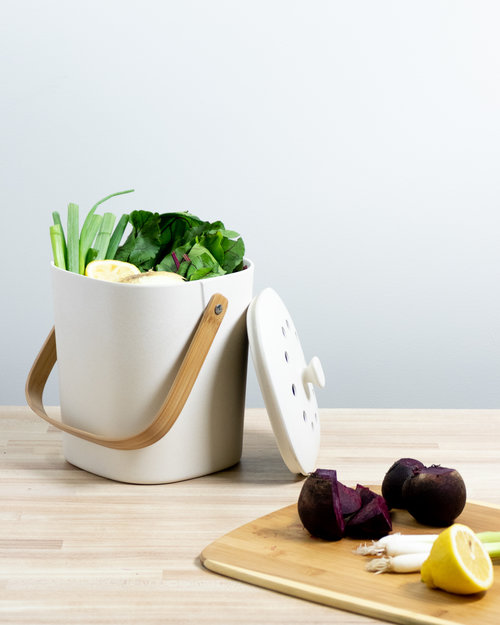Composting is a great way to cut down on unnecessary organic waste and live a more sustainable life. It is estimated that around 30% of the waste we throw away is comprised of food scraps and yard clippings. By turning this waste into compost, it cuts down on methane emissions from landfills, while adding nutrient rich material back into the soil. For beginning gardeners, this is a great way to reduce plant disease and pests, while keeping soil moist and healthy. We've broken down how you can get started with your own backyard compost.
Composting Tips
In order to compost successfully, you will need three components:
-
Brown material - this is made up of items like broken twigs, dead leaves, and dry tree branches.
-
Green material - this includes things like grass clippings, fruit & vegetable scraps, and shredded newspaper.
-
Water - maintaining the right amount of moisture will help turn compost into nutrient rich material for your garden.

WHAT TO COMPOST:
-
Fruits & Veggies
-
Egg Shells
-
Coffee Grounds & Filters
-
Shredded Newspapers
-
Yard/Garden Trimmings
-
Dryer & Vacuum Cleaner Lint
-
Hair and/or pet fur
-
Teabags
-
Paper
-
Sawdust
-
Cardboard
WHAT NOT TO COMPOST:
- Dairy products (e.g., butter, milk, sour cream, yogurt) and eggs*
- Creates odour problems and attract pests such as rodents and flies
- Diseased or insect-ridden plants
- Diseases or insects might survive and be transferred back to other plants
- Fats, grease, lard, or oils*
- Creates odour problems and attract pests such as rodents and flies
- Meat or fish bones and scraps*
- This can cause odour problems and attract pests such as rodents and flies
- Pet wastes (e.g., dog or cat faeces, soiled cat litter)*
- Might contain parasites, bacteria, germs, pathogens, and viruses harmful to humans
- Black walnut tree leaves or twigs
- Releases substances that might be harmful to plants
- Coal or charcoal ash
- Might contain substances harmful to plants
- Yard trimmings treated with chemical pesticides
- Might kill organisms that are beneficial to composting
How To Get Started

Although there are a few different ways to start your own compost, we have listed a beginners guide to serve as a reference. Make sure you have proper tools for the job such as shovels and pitch forks. Be sure to keep the soil moist and turn it regularly.
FOR COMPOSTING IN YOUR BACKYARD:
-
Select a dry, shady spot near a source of water for your compost pile.
-
Add brown and green materials as they are collected, making sure larger pieces are chopped or shredded.
-
Moisten dry materials as they are added.
-
Once your compost pile is established, mix grass clippings and green waste into the pile and cover the fruit and vegetable waste with 10 inches of compost material.
-
Optional: Cover top of compost with a tarp to keep it moist. When the material at the bottom is dark and rich in color, your compost is ready to use. This usually takes anywhere between two months to two years.

FOR COMPOSTING INDOORS:
-
If you don't have room for an outdoor compost pile, you can compost materials indoors using a special type of bin, which you can buy at a local hardware store, gardening supplies store, or make yourself.
-
We currently offer a counter-top composter that does just this.
-
Remember to maintain your pile and keep track of what you put in it. A properly managed compost bin will not attract pests or rodents and will not smell bad.
-
Keep track of the moisture levels and run occasional tests to measure the acidity of the compost material.
-
Once the compost bin is full, move it outside, especially during warmer weather to help speed up the process.
-
Your compost should be ready in four to twelve weeks.


